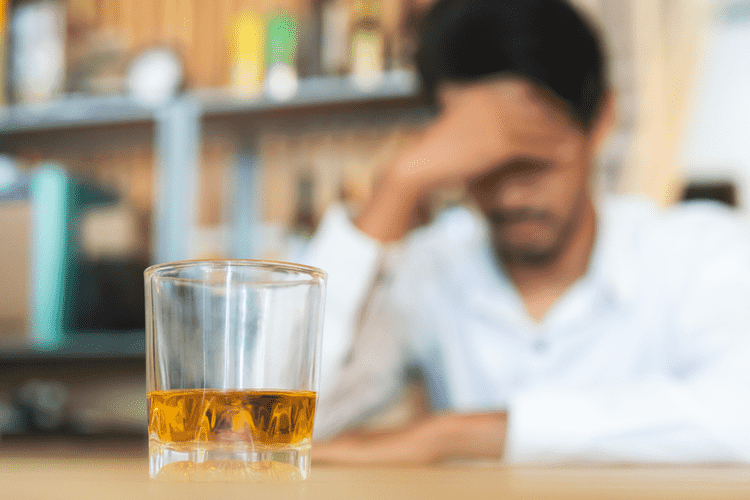For this reason, older people tend to metabolize alcohol more slowly than someone who is younger. Someone who feels that they are drinking too much or is having difficulty cutting back should speak with their doctor for advice on quitting. Keeping track of what and how much a person drinks addiction specialist degrees certifications and qualifications can help them recognize when they might be drinking too much. Pumping breast milk will not eliminate alcohol from the milk any quicker. A person who is a lighter weight or who has a smaller body frame will be more affected than someone who weighs more or has a larger body frame.
Medications
It also needs to assign a unique number to each test and print certain information on each copy. Finally, these devices need to distinguish acetone from alcohol at specific levels. Niki Achitoff-Gray is a graduate of the Institute of Culinary Education and the former editor-in-chief of Serious Eats. These days, she writes about all things food and drink, including her passion for extra-dirty martinis and palo cortado sherry. How long alcohol stays in your system can vary greatly by the factors listed above as well as the type of test used. When the body is done processing alcohol, it is eliminated through urine, sweat, and breath.
- Factors that determine how long alcohol stays in your body include liver size, body mass and the amount of alcohol consumed.
- Choking and blackouts can also be an issue at this level of intoxication.
- So, as soon as you drink it, your body starts working on getting it out of your system ASAP.
- For a person weighing 150 pounds, for example, one standard drink will increase their blood-alcohol concentration by about 0.02%, but the body can only remove about 0.016% per hour on average.
Can you drink alcohol instead of taking a blood thinner?
Although the legal limit for driving is .08% in all states, penalties vary sharply. Plus, in some states, drivers under the age of 21 have a different, much lower, legal BAC percentage threshold. It’s important to remember levels of intoxication feel different for different people. For instance, someone could have .03% BAC and still be very intoxicated and unable to drive. Alcohol use disorder affects many, but some are at a higher risk than others of receiving the diagnosis.
Should you drink alcohol to help your circulation?
Even when you’re at home, too much drinking can compromise your physical health, resulting in alcohol poisoning or death. The above times reflect the metabolism rate of a healthy, functioning liver. If you are a heavy or long-time drinker, your liver may require more time to eliminate alcohol from your body. Regardless of how fast your body absorbs alcohol, it eliminates it at the average rate of 0.016 BAC per hour. Nothing you do will speed up the elimination process, including drinking coffee, drinking water, taking a shower, or even vomiting. While these techniques create the illusion of sobriety, they have no effect on BAC.
In most jurisdictions, a BAC of 0.08% is considered legally intoxicated for driving purposes. At this level, there’s a significant impairment of motor skills, reaction time, and judgment. Research has found that women have less of the enzyme alcohol dehydrogenase (ADH) in their stomachs compared with men. ADH, which is also in the liver, is one of the key players responsible for breaking down alcohol.
Research has found different genetic variations of the enzymes that break down alcohol. Because some versions of these genes are better than others at metabolizing alcohol, your genetic makeup helps determine how quickly your body breaks down alcohol and also how alcohol affects you. In people who drink moderately, the effect of alcohol on platelets is short-lived. When you’re injured, blood cells called platelets rush to the injury site.
Therefore, alcohol researchers and clinicians have little experience using beta-Hex as a diagnostic tool [40, 67]. Future research is needed to investigate various characteristics of beta-Hex as a potential blood biomarker for alcohol use and whether a large-scale implementation would be feasible and cost-effective. The available blood biomarkers considerably vary in the time period in which they detect alcohol use and the amount of alcohol they are sensitive to. Your body absorbs alcohol more slowly when you have food in your stomach. Those who drink on an empty stomach will feel the effects of alcohol more quickly.
These groups, whether in-person or online, can help you feel supported and less alone as you navigate recovery. Determining exactly how long alcohol is detectable in the body depends on many variables, including which kind of drug test is being used. Alcohol can be detected for a shorter time with some tests but can be visible for up to three months in others. A shot of liquor is estimated to metabolize in an hour, a pint of beer in two, a glass of wine in three, and several drinks could take multiple hours, according to Healthline.com. The liver does the heavy lifting when it comes to processing alcohol.
Acetate and other alcohol byproducts quickly move to your kidneys and then to your urine. The point at which you reach 0.08% BAC depends on your sex, weight, how much you drink — and how quickly. Too high for driving, for example, is a number regulated by your state. But that doesn’t mean it’s safe to drive if you’re substance abuse counseling below those numbers. Determining when your alcohol level is too high depends on what you’re assessing it for. As the current science has only been conducted on cisgender males and females, transgender or intersex individuals may be safer following the most conservative recommendations for their weight range.
After the alcohol passes through your stomach, small intestine and bloodstream, your liver starts its cleanup. Although food and water consumption can affect the absorption rate, alcohol is eliminated at a rate of 0.016 BAC per hour. East Asian individuals, for instance, will more often possess certain genes that can affect how alcohol is processed in the body. Blood tests, like breathalyzer tests, can detect alcohol the quickest of all drug tests, but also have the shortest detection windows. Alcohol can remain in the breast milk for as long as it remains in the blood. As alcohol leaves the blood, it also leaves the milk, making it unnecessary to “pump and dump” breast milk after drinking alcohol.
For most states in the United States, the alcohol limit to legally drive a vehicle for drivers aged 21 or older is currently 0.08% BAC. By Buddy TBuddy T is a writer and founding member of the Online Al-Anon Outreach Committee with decades of experience writing about alcoholism. Because he is a member of a support group that stresses the importance of anonymity at the public level, he does not use his photograph or his real name on this website.
It is important to know that someone who drinks a lot or on an empty stomach may still have alcohol in their system the next day, making it illegal to drive a vehicle even then. Some people of East Asian descent lack the enzymes necessary to break down alcohol. This can cause a reaction that includes facial flushing, nausea, dizziness, rapid alcohol use disorder treatment heart rate, and headache. Because alcohol is absorbed into the digestive tract, the presence of food in the stomach has a significant effect on the absorption rate of alcohol. For instance, pre-employment testing often has a fast turnaround window to help speed up the hiring process, so you might know those results within a few days.
When ingested, alcohol is rapidly absorbed from the stomach and small intestine into your bloodstream before it travels to the nervous system (brain and spinal cord). As a central nervous system depressant, alcohol impairs the communication of messages in your brain, altering your perceptions, emotions, movement, and senses. Saliva tests can detect alcohol two hours after consumption, and hair tests can detect alcohol for up to 90 days.




